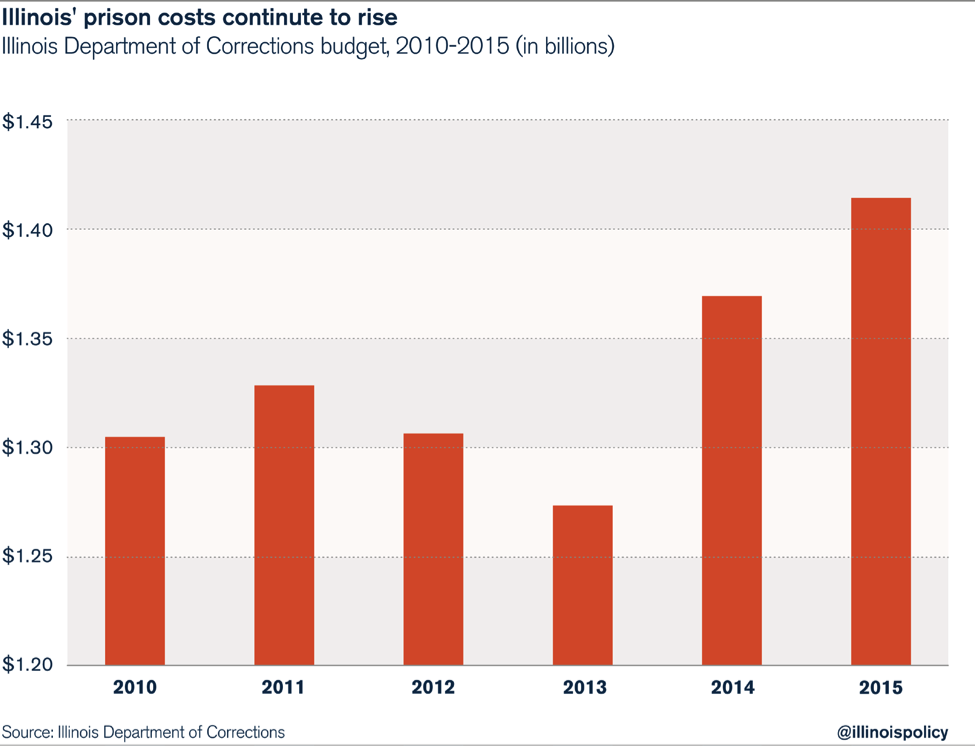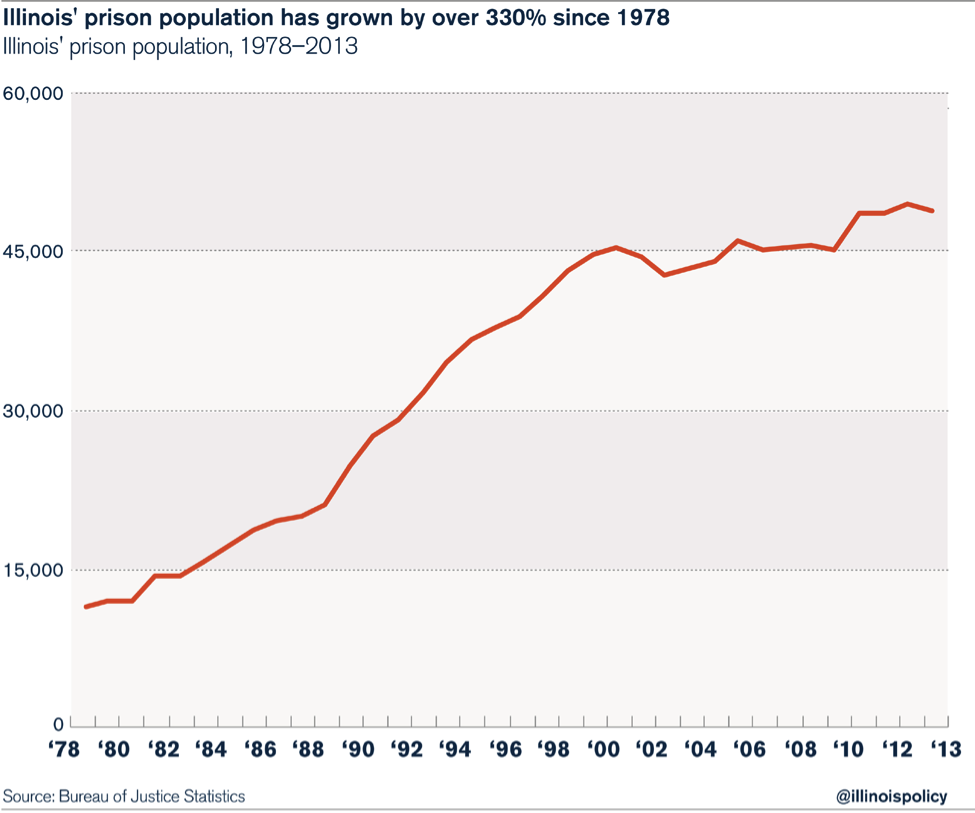Prison population growth driving Illinois’ corrections budget higher
Illinois’ prison budget grew $110 million over the last five years.
The Illinois Department of Corrections, or IDOC, is the state agency tasked with running Illinois’ prisons, which house offenders after they have been convicted of a felony offense by a court.
IDOC’s budget has expanded by $110 million just over the last five years, in spite of some high-profile attempts to get spending under control.
Illinois did see a budgetary decrease in 2013, when the state shut down two prisons – the Tamms Correctional Center and Dwight Correctional Center – along with adult transition centers in Decatur, Carbondale and Chicago. But in 2014, the prison budget jumped higher than ever, and the trend continued in 2015.
Facility closures may have saved some costs in the short term. But this alone has failed to address the true driver of prison costs: population growth.
All IDOC spending, directly or indirectly, goes toward costs associated with housing the prison population. The bulk of IDOC’s spending, more than $1 billion each year, goes toward facility operations: the cost of running 25 state prisons, four adult transition centers and seven work camps. Health-care services follow, costing around $130 million annually. Much less is spent, in comparison, on job-training programs, parole monitoring and substance-abuse treatment regimens.
IDOC spent also $873 million on payroll in 2014, the second-largest salary expenditure of any state agency. Because Illinois’ prison population is so large, holding about 48,000 inmates, it’s unsurprising the state makes significant expenditures on prison staffing. IDOC employs nearly 11,000 employees, of which 7,994 are corrections officers – providing for six inmates to an officer.
But much of these costs are avoidable. Illinois prisons spending on overtime has spiked by 200 percent since 2004, an expensive expenditure since employees must be paid 1.5 times their hourly wage for overtime work. In the last five years, IDOC has paid out over $320 million in overtime hours; overtime cost taxpayers $74 million in 2014, according to a research report by the Better Government Association.
Of course, like all government agencies, IDOC suffers from waste and inefficiency. Some of the challenges specific to the department are discussed in its 2014 audit from the Illinois Auditor General.
But if the state really want to see costs come down, policy solutions will need to focus on operations and staffing, which make up the bulk of IDOC’s budget. And since operations and staffing are driven by incarceration numbers, looking at ways to safely reduce the prison population is essential.


